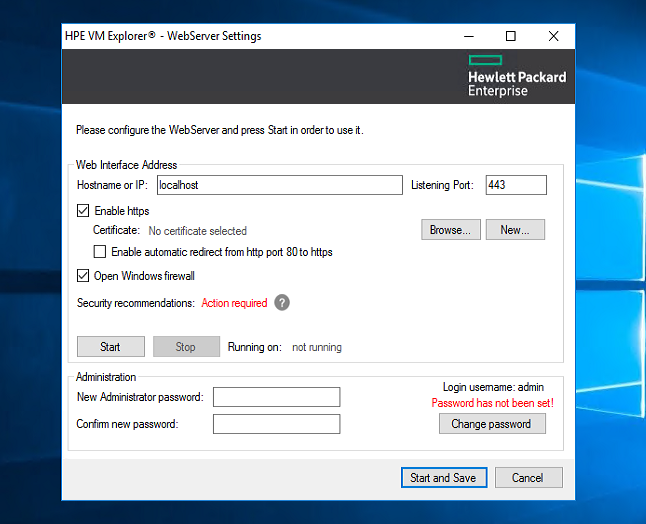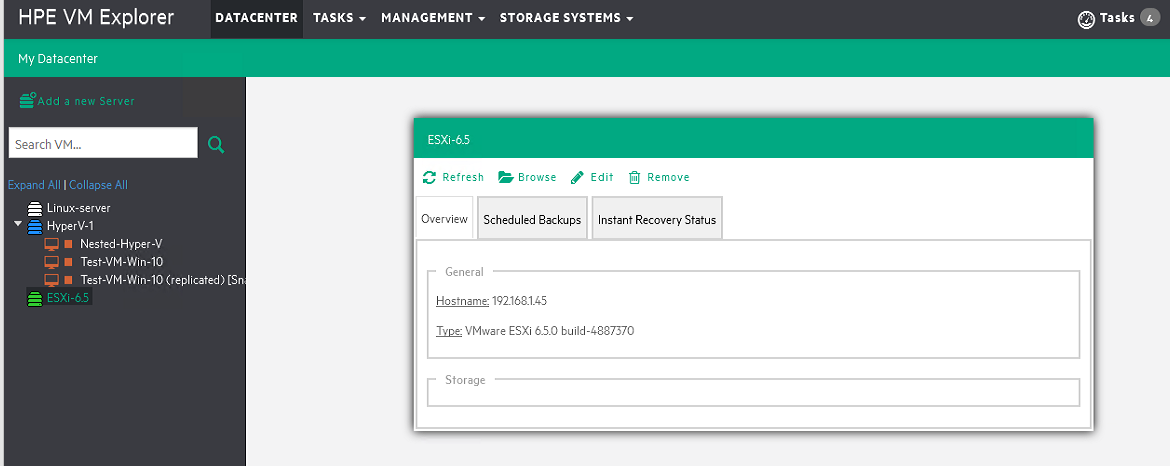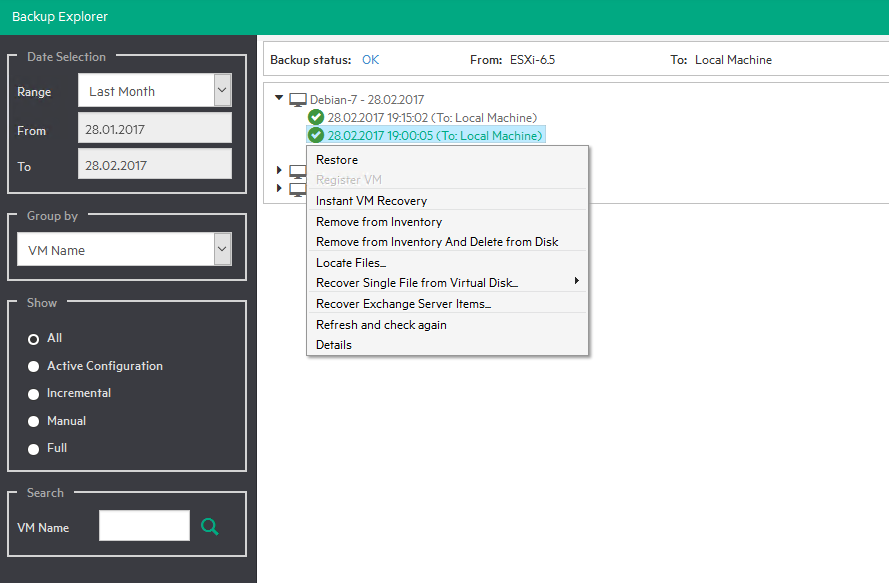Installation requirements
VM Explorer is composed by a software that has to be installed on a Windows Server 2008 R2 or more recent server (either virtual or physical). Other requirements are the same as the previous version, except having the .NET 6.4.2 package installed; support for 32-bit OS is over.
Once the installation is completed, start the program and select the Web Settings menu voice to set the admin password; you also need to set an IP address to access the Web interface: this release, as the previous 6.2 version, doesn’t feature the Windows client anymore.
Support to vSphere 6.5
The most important news of this release is the suporto to vSphere 6.5, the most recent version of the VMware product. Both ESXi 6.5 hypervisor (free version too, albeit only complete backups are available) and vCenter 6.5 are supported.
When adding an ESXi host, all VMs on the host are shown in the lateral dropdown menu: similarly, when adding a vCenter, hosts belonging to the cluster and related VMs are listed.
Again, if the VDDK service (Virtual Disk Development Kit the API set dedicated to storage management) is enabled in vCenter/ESXi host, then by default the system offers an Incremental backup to save time and resources. VD Services too are enabled by default if VDDK is ON. Those services allows to leverage the CBT -Changed Block Tracking- technology which speeds up backup execution. Be aware that these capabilities are not available with the free version of ESXi for the VADP API (vStorage APIs for Data PRotection) are blocked.
Exchange 2013/2016 file recovery
The second appealing news is the support to file-level recovery for Microsoft Exchange 2013 and 2016.
It’s an important addition as in most cases you need to restore a limited number of emails, and also because it optimizes resource usage not having to restore whole mailboxes anymore.
Other new features
A note-worthy feature is the introduction of S3-compatible Cloud Storage Targets, ie services which are based on the API set of AWS S3. To make a few examples, Google Cloud Storage, CloudStack, Ceph, Nimbula, Swift and Minio. Cloud storage destination are enriched thus offering different options for Cloud remote backup.
Good news for Linux users: support for EXT4 file system has been added. The advantages of EXT4 over other file systems like EXT3 are evident: max size (file system: 1 Exabyte, single file: 16 Terabytes), number of directories (64.000), features (journaling checksum, multi-block/delayed allocation, fast fsck, etc…) and performances. EXT3 file systems can be mounted as EXT4 without requiring an upgrade (and thus a reboot).
In VM Explorer 6.3 you can now schedule backup every 15 or 30 minutes, thus having less fragmented backups and creating a good Disaster Recovery; previously RTO was at least 60 minutes.
The list of new features ends with control to prevent Sweet32 attacks (related to the 3DES encryption algorithm) which exposes encrypted connections, and some minor bugfixes.



